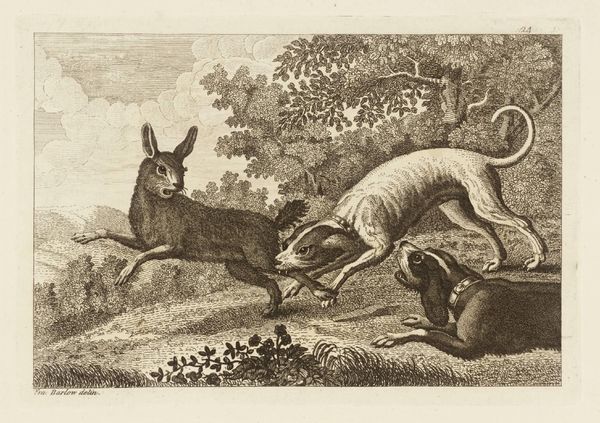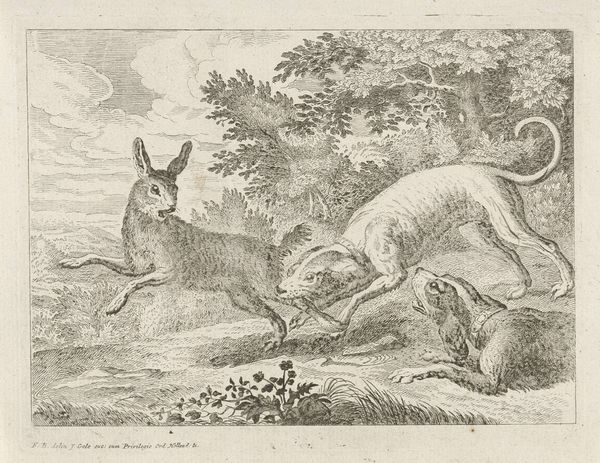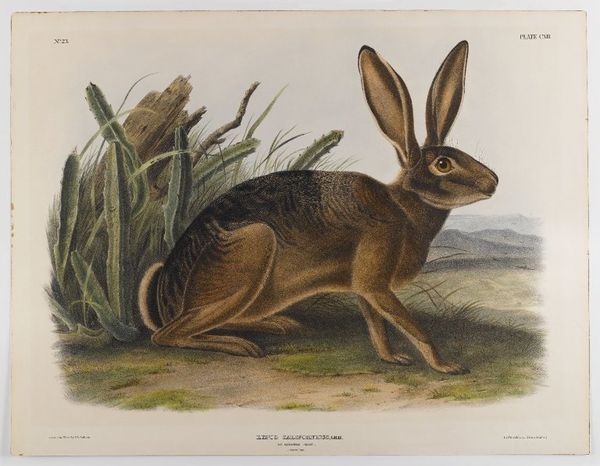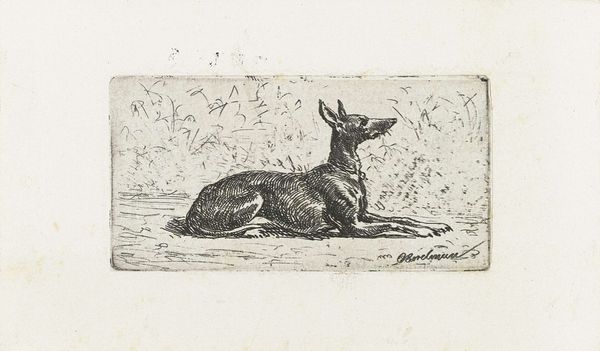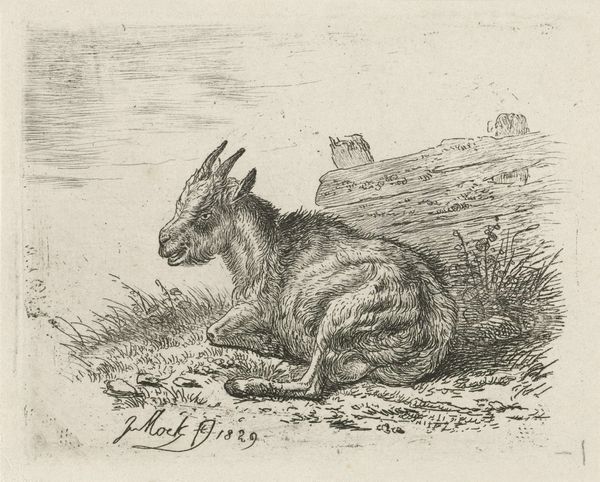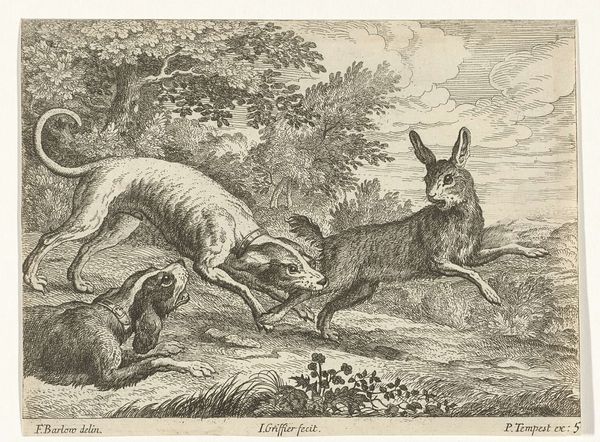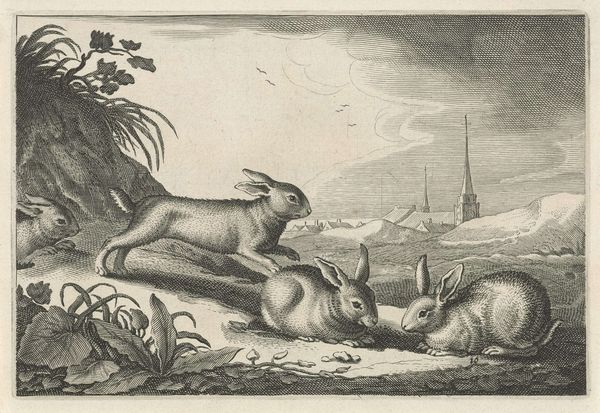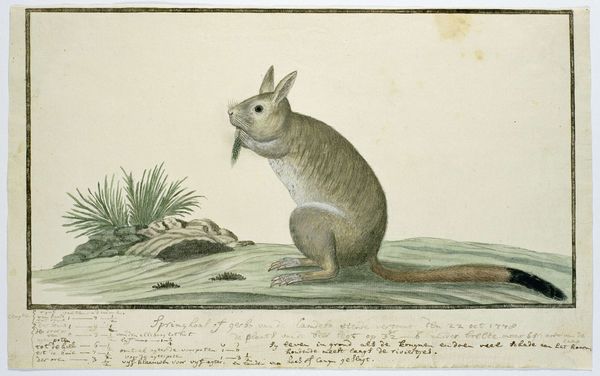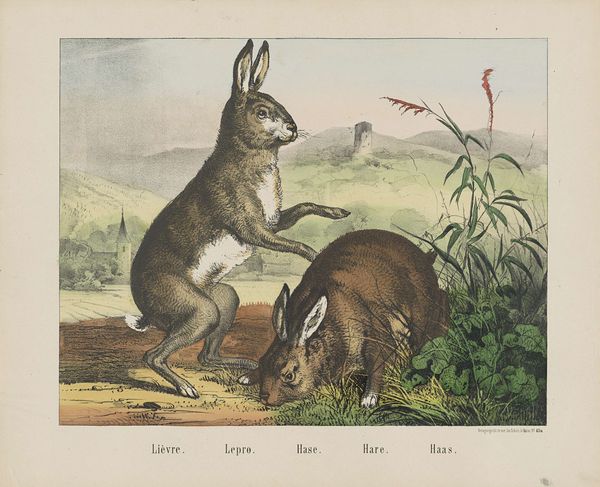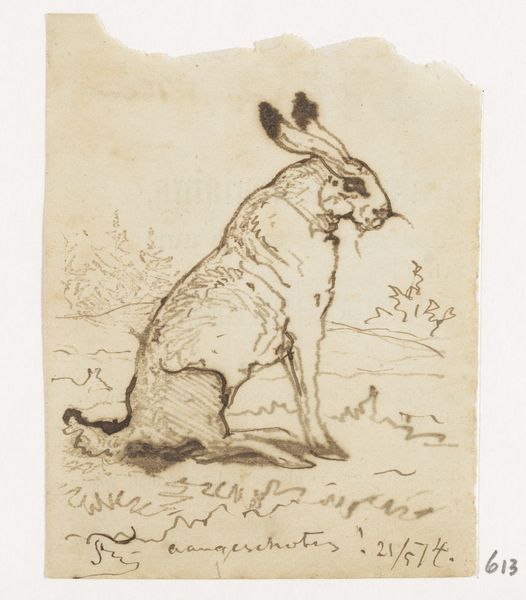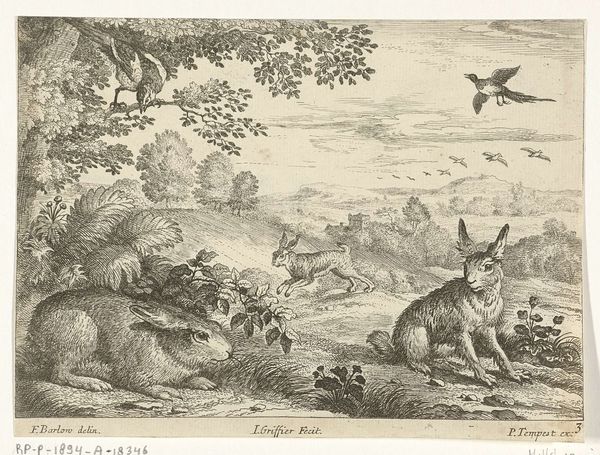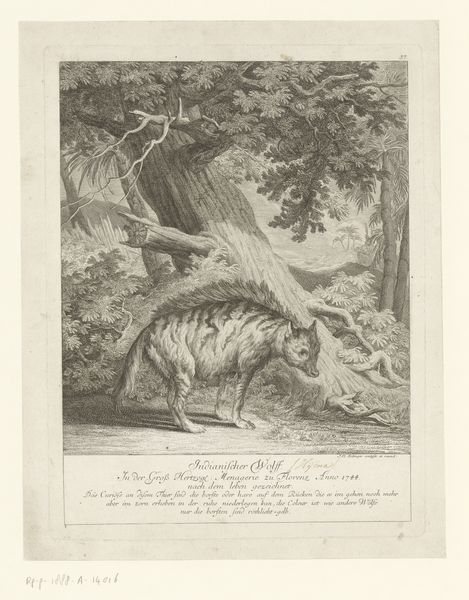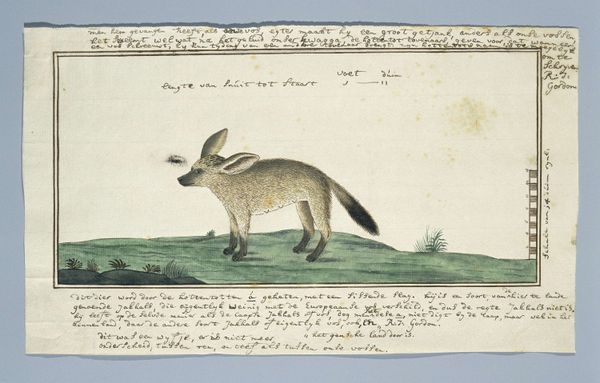
#
comic strip sketch
#
aged paper
#
light pencil work
#
pencil sketch
#
old engraving style
#
personal sketchbook
#
sketchbook drawing
#
pencil work
#
storyboard and sketchbook work
#
sketchbook art
Dimensions: height 205 mm, width 193 mm
Copyright: Rijks Museum: Open Domain
Curator: Here we have an intriguing sketch entitled "Onbekend dier", or "Unknown Animal", created in 1773 by W. Tringham. It’s rendered with delicate pencil work, possessing a distinctly aged quality. Editor: My first thought? That creature looks incredibly anxious! Its ears are practically vibrating with tension. It reminds me of political cartoons, like it might be allegorical. Curator: Precisely. Note how the unknown animal’s form seems pieced together. It almost fits into bestiary traditions – representing our fragmented understanding of the natural world through composite imagery. The choice to call it "unknown" also suggests it's symbolic. Editor: The very act of naming, or in this case, *not* naming, is fascinating. Placing this image into a wider framework: what kinds of anxieties, perhaps about classification itself, might Tringham reflect during this period, when colonial explorations radically reshaped understanding of natural history? Curator: Consider the tree-like structure to the right—is it botanical, geological, or architectural? It might serve to suggest our attempt to categorize, contain, and even monumentalize knowledge. What do you see in its relationship to the setting? Editor: Good question. It certainly speaks to power relations – here are presumed-to-be foreign botanical and animal specimens, arranged as part of the imperial gaze that redefines them as images for European consumption. This is an archive about to be unleashed. Curator: I’m fascinated how even through modest pencil lines, powerful emotions surface and how such seemingly straightforward depictions tap into larger human preoccupations: defining ourselves relative to what is strange or ‘unknown’. Editor: Yes, indeed. The ambiguity gives this otherwise quaint etching considerable depth, prompting reflections on the politics inherent in naming and ordering the natural world, that clearly resonate still today.
Comments
No comments
Be the first to comment and join the conversation on the ultimate creative platform.
